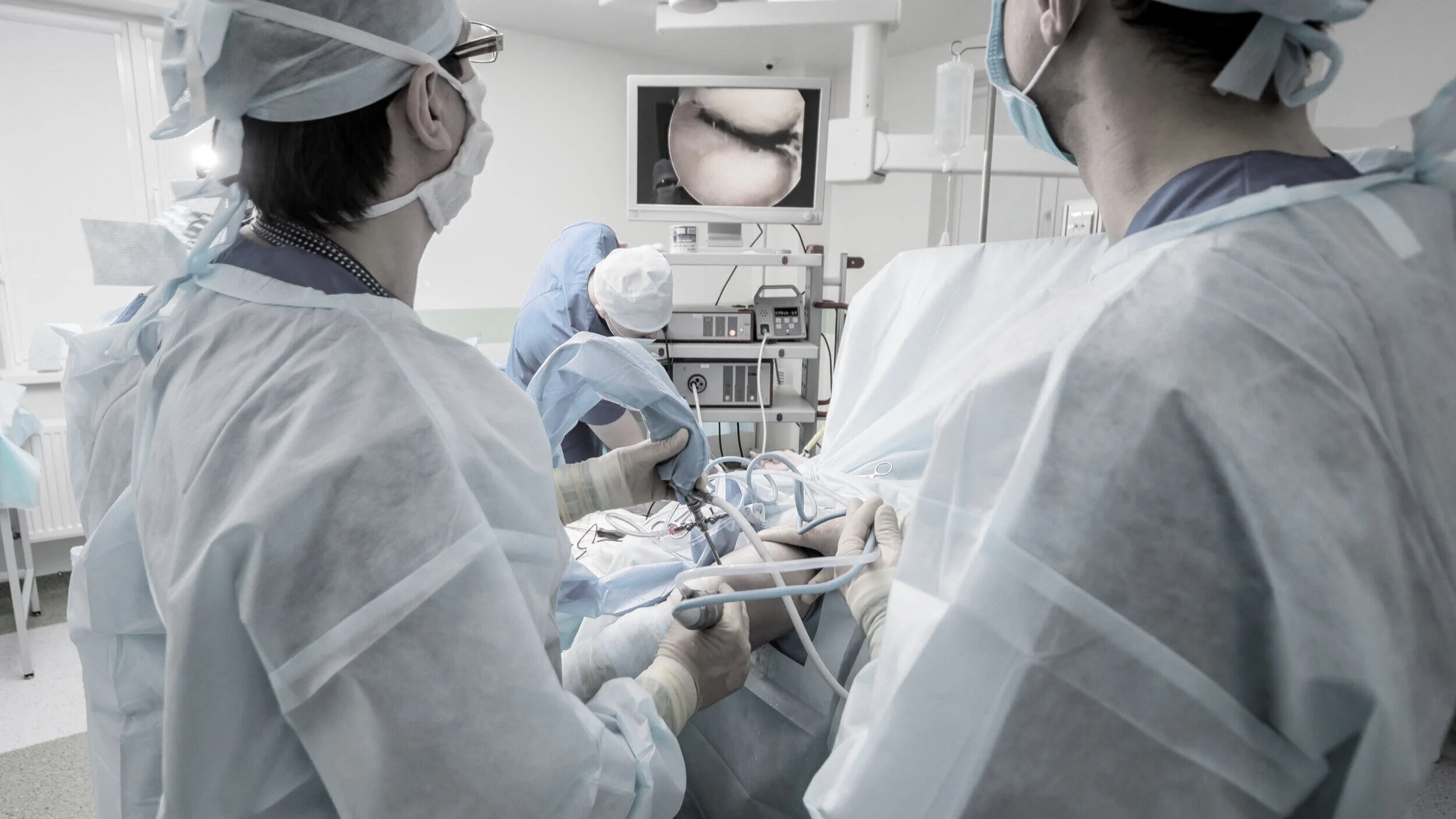Elbow Arthroscopy.
Why might I need an elbow arthroscopy?
Mr Moverley may recommend this procedure to treat or diagnose many problems related to the elbow such as arthritis, tennis elbow, soft tissue impingement or stiffness following previous injury. Surgery is only required once an appropriate course of non-operative treatment has been undertaken and symptoms persist to an unmanageable level.
What does surgery involve?
On the day of surgery you will be admitted to the ward or surgical admission area. You will once again meet Mr Moverley who will ensure you are still happy to proceed and that you understand the risks and benefits of the procedure. This is a good opportunity for you to ask any further questions that you may have. You will be asked to sign a consent form if you have not already done so.
You will meet your anaesthetist who will explain the type of anaesthetic you will receive. Elbow arthroscopy usually requires a general anaesthetic (you will be asleep) and a nerve block so that the arm will be numb for approximately 12 hours post operation.
Elbow arthroscopy is performed as a ‘key-hole’ procedure through a number of small incisions at the front and sides of your elbow. Mr Moverley will be able to assess the inside of your elbow in great detail using a high-resolution camera to establish the most likely causes of your symptoms and in most cases provide treatment at the same time.
At the end of the procedure Mr Moverley will gently stretch the elbow in all directions to ensure a full range of motion can be achieved.
The procedure is usually done as a day case meaning you can go home on the same day as your surgery.
The wounds are repaired with stitches and covered with a splash proof dressing. The wounds should be kept dry for 10-14 days.
What happens post operatively?
Immediately after surgery your arm will be in a sling and will usually feel heavy and numb as a result of the nerve block. You will be given painkillers if you are in any pain, and these will also be provided upon discharge.
A physiotherapist will assess you to make sure that you can remove and apply the sling safely. They will provide some early exercises to help prevent stiffness of the hand, wrist and elbow.
Physiotherapy is individualised to your specific needs and will depend greatly on the type of procedure you have. Broadly speaking your rehab will progress with the following goals:
Early (1-2 weeks): Minimize post-operative stiffness with active finger, wrist and elbow movements. Wean off the sling after 2 days.
Middle (2-6 weeks): Continue to achieve full active range of movement.
Late (6 weeks and beyond): Strengthening program, once full range has been achieved. Graded return to all previous functional and recreation activities.
Approximately how long will it be before I can…?
Drive 2 weeks
Desk job 2 weeks
Manual work 8-12 weeks
Golf 12 weeks
Racket sport 12 weeks
Contact sport 12 weeks
Repetitive overhead activity/sport 12 weeks
These are approximate and your surgeon will give you more specific advice following the procedure.
What are the potential risks and complications?
As with any operation, a small number of people may have problems after an elbow arthroscopy. Most of these problems are quite minor and can be treated easily but occasionally further surgery is needed.
Potential risks and complications are:
The main risk of elbow arthroscopy is damage to the major nerves and blood vessels that cross the elbow and supply sensation, vascularity and power to the hand and forearm. If these are damaged, you are likely to have a worse outcome than without surgery. Fortunately the risk of this complication is low (1-2%).
Infection – less than 1 % of cases
Stiffness - Mild stiffness is quite common but occasionally the elbow can severely stiffen an may require a further procedure.
Failure to improve (10-15% of cases)
Is elbow arthroscopy always successful?
Approximately 85% of patients will make a good or excellent recovery. 10% will have a degree of discomfort but will be satisfied with their outcome. 5% of patients will have on-going problems, such as pain and stiffness, and some of these require further surgery.
The elbow arthroscopy are therefore not guaranteed which is why Mr Moverley will want to ensure that all non-operative measures have been exhausted first.

